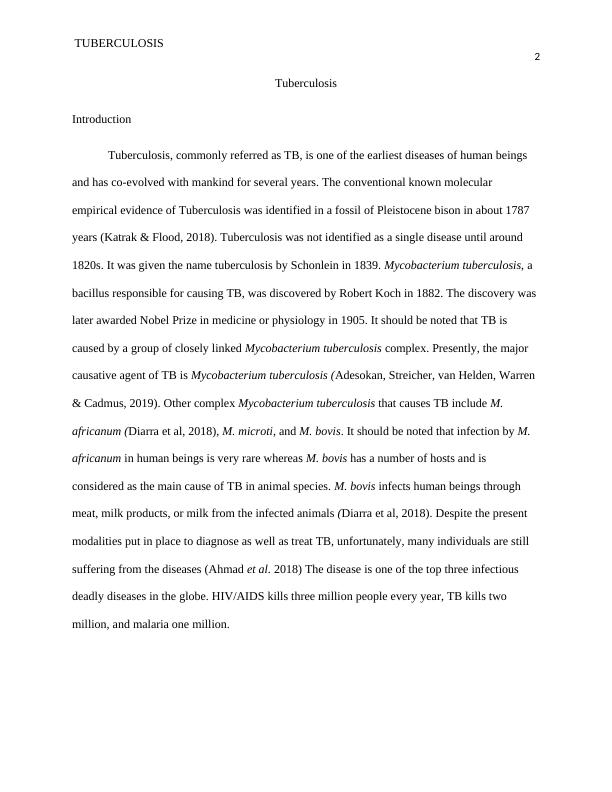Tuberculosis - Causes, Symptoms, Diagnosis and Treatment
Added on 2023-04-23
7 Pages1562 Words144 Views
End of preview
Want to access all the pages? Upload your documents or become a member.
Tuberculosis: A Global Epidemic
|7
|919
|293
Epidemiology of Tuberculosis among individual more than 18 years in African Countries between 2005-2015
|15
|3052
|211
Epidemiology Assignment on Tuberculosis
|16
|4620
|210
Urban Health Issues : PDF
|13
|4639
|308
Tuberculosis is a contagious disease caused by a bacterium called Mycobacterium tuberculosis
|14
|3085
|14
Tuberculosis: Causes, Transmission, and Impact on Society
|14
|4447
|22



